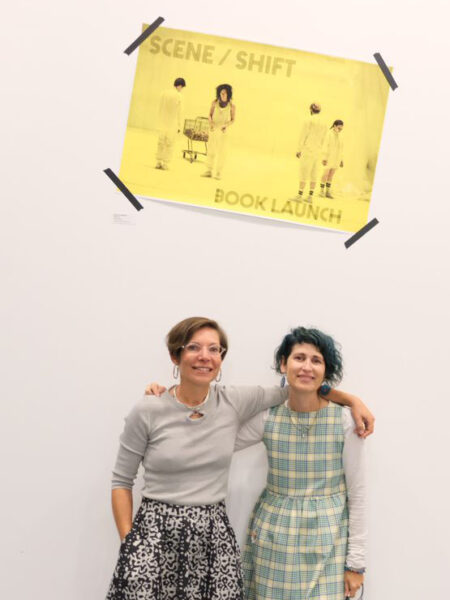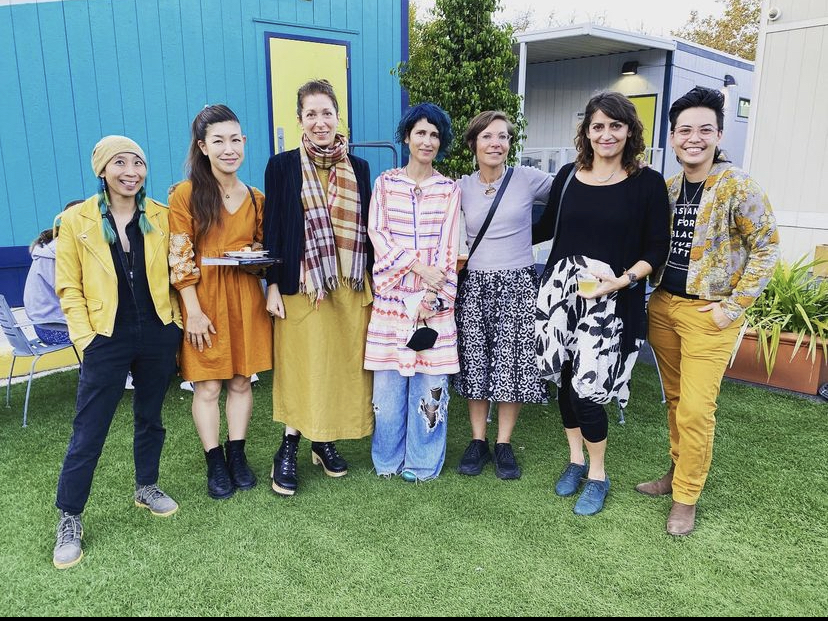
Amidst the background of the pandemic, as the future of theatre and set design were filled with promise and uncertainty, USC School of Dramatic Arts alumna Maureen Weiss (BFA ‘96) and Associate Professor of Scenic Design Sibyl Wickersheimer set out to produce a book that would highlight the voices and work of contemporary set designers in a way that had never been done before. The result—Scene Shift: US Set Designers in Conversation, available from Routledge—is an extraordinary look into the concerns, challenges, and creative processes of set designers in the U.S. and around the world. The work is part gorgeous coffee table book highlighting the beautiful, sometimes ephemeral work of some of today’s best set designers, and part candid conversation on a variety of topics surrounding an artform trying to rediscover itself.
“We were trying to present everyone as an expert and provide a place where we can all come together to learn from one another,” Wickersheimer said. “That’s something you don’t get very often, because set designers are really insular. There’s usually one per project.”
Scene Shift offers readers an opportunity to be party to the conversations, concerns, and ideas of prominent set designers, who are typically known to those working in the field.
One topic explored is the difficulties of pursuing a career as a set designer—which can have incredible financial barriers, especially early in a designer’s career. Wickersheimer and Weiss are both academics and teachers as well as working artists, so teaching the next generation of set designers is often top of mind. The various ways that people come to the art of set design can be seen throughout the conversations.
“I think one of the issues of the pathway of the set designer is that it’s hard to attain and hard to describe,” Wickersheimer said. “Oftentimes you’ll have students ask when they graduate, ‘So how do I do this?’ And the answer is: I don’t know. Here are some ways that others have gone about approaching this career. Here’s how I did it, but that will not be how you do it.”
Among the many reasons pursuing a career in set design can be inaccessible for some is the historic underrepresentation of female, non-binary, and BIPOC set designers in the industry. While the pandemic offered a chance to reconsider many of the practices and norms of all aspects of theatre, only some—and not enough—of those changes have materialized. Wickersheimer pointed out that change has been especially slow in the field of set design.
“Costume design has moved. I think even in lighting design they’ve looked at more women in the ranks,” Weiss said. “I haven’t seen a lot of movement toward pushing more women or designers of color into set design.”

A diversity of voices
While most of the contributors are non-cis-male set designers, the emphasis of the book was first to highlight designers whose work excited Weiss and Wickersheimer.
“The diversity of styles and approaches and location was our first interest when we looked at the group of set designers [to include in the book],” Wickersheimer said. “We really started with, who excites us? We found so many voices and early career designers.”
But the work that must be done to expand representation is not something that the authors shied away from. “We knew it would come to the surface because we needed to discuss these things,” Weiss said. “We needed to be honest with the fact that women aren’t hired as much, and they walk into rooms where they might be the only woman. It can be such a relief to hear that other people have the same feelings as you do.”
The influence of the book has spread beyond its pages and into events that have taken place in Los Angeles, New York, and Chicago. At each of these events, prominent set designers have gathered in front of audiences to participate in extensions of the conversations with Weiss and Wickersheimer, creating opportunities to brainstorm what the industry’s next steps might be.
Issues that have found their way front and center in these conversations include what it means to be a set designer—straddling the line between being a working craftsman and an artist—as well as the issue of sustainability. For many set designers, environmental issues are a grave concern, but there is no getting around the fact that the work uses physical materials and resources to create art. The conversation will continue this year and into 2024, with an event and exhibit at the USC Fisher Museum of Art.
“The interesting element that will pull all this together is the thread of being a set designer versus being an artist, taking set pieces that have been part of a set in the past and remaking them,” Weiss said of the coming exhibit. “The idea is that we’ll be teaching audience members what the process of set design is, and that it’s fake, and that we’re often in modes of destruction. We create these pieces, and they’re often destroyed on stage. They’re very momentary, so they’re not as revered as sculpture.”
Wickersheimer agreed.
“It will be nice to see the book come to life and physicalize what the conversation is,” Wickersheimer said.